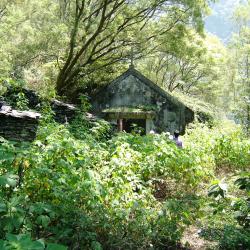This chaple was built around the 1960s. In the early postwar period, under the influence of the changing customs policy during the Japanese occupation, traditional Haocha rituals gradually declined. As a result, some ceremoniy related spaces, such as spiritual houses or shrines, gradually lose their meaning due to the loss of support for activities. Since Christianity was introduced into the Haocha village in the 1950s, the beliefs of many Haocha people have changed with a very high percentage of residents believing in Christianity. With Presbyterian first entered Haocha preaching in 1950, the Catholics also came to spread the gospel in 1952, and then in 1956, Seventh-day Adventist missionaries entered the tribal mission, the initial preaching of the gospel was challenged by primitive beliefs and the opinions of tribal leaders. After that, churches such as the Presbyterian Church, the Sabbath Church, and the Methodist Church appeared one after another in the settlement. Most of these churches were rebuilt from the vacant houses of the migrants. During this period, the traditional beliefs and spatial views of Haocha people changed drastically.
- - / -
- - - -
- -
- -/-
- -

